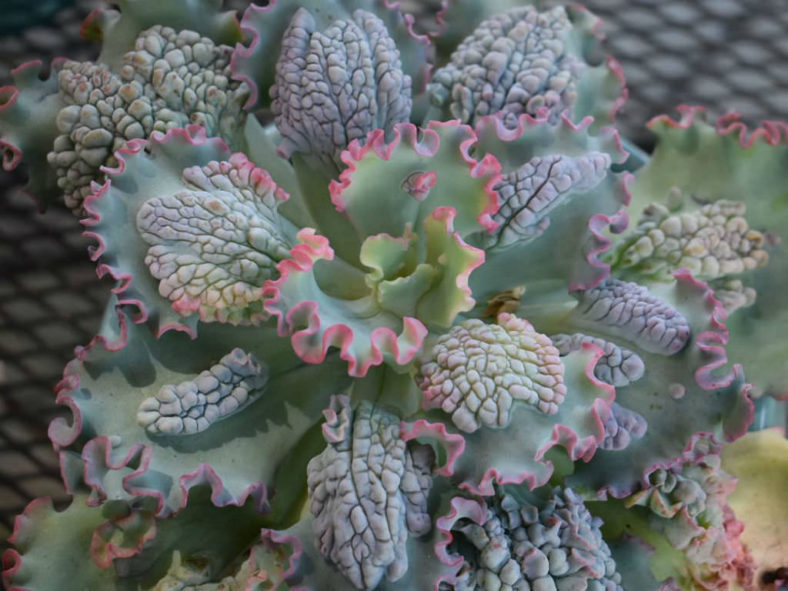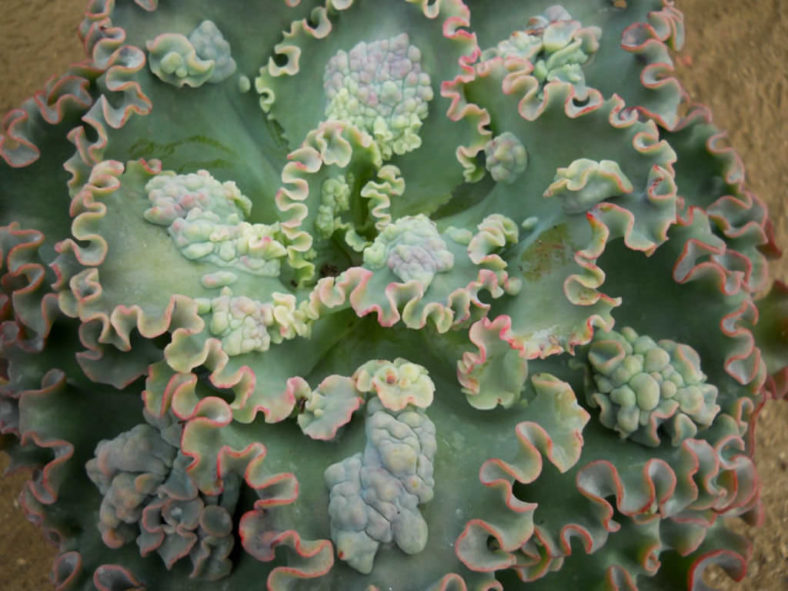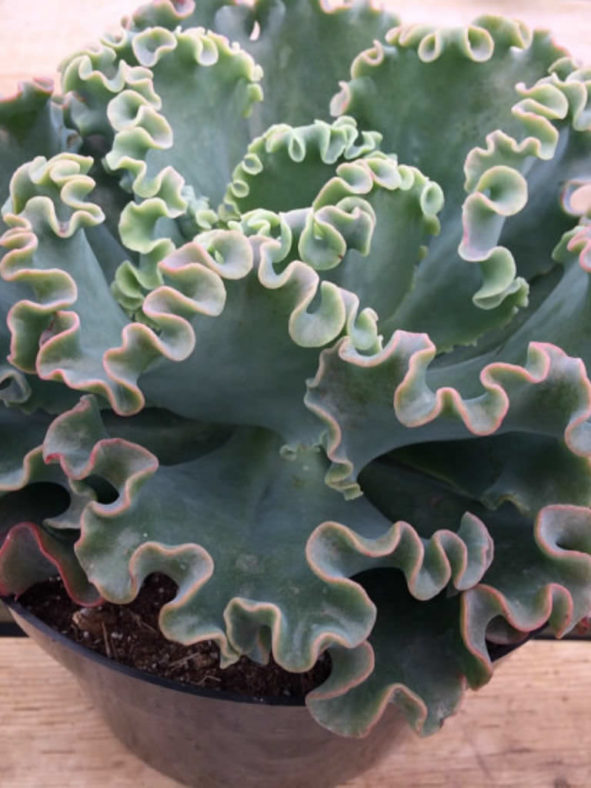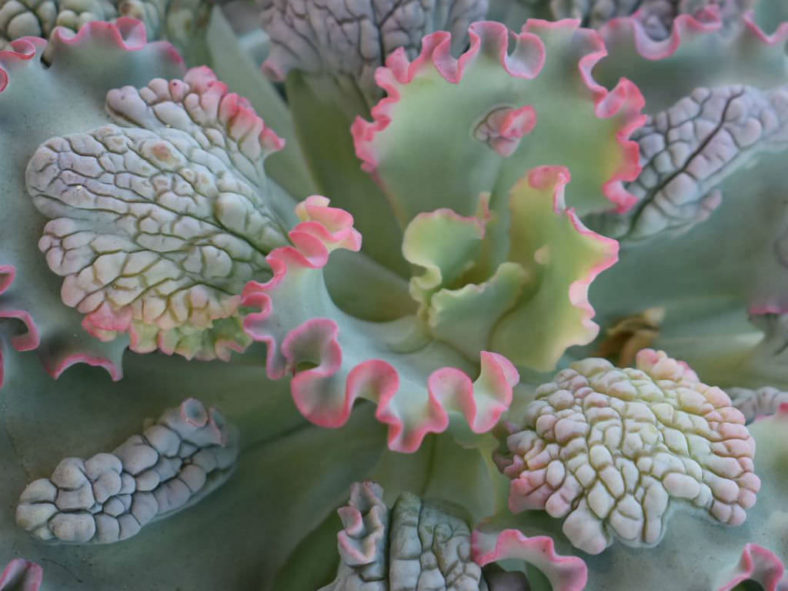Scientific Name
Echeveria 'Sea Dragon'
Scientific Classification
Family: Crassulaceae
Subfamily: Sempervivoideae
Tribe: Sedeae
Genus: Echeveria
Origin
Echeveria 'Sea Dragon' is an Altman Plants original hybrid patented (PP29814) in 2018. It was created by Renee O'Connell in 2012 and discovered by him in 2013.
Description
Echeveria 'Sea Dragon' is a beautiful succulent that forms a short-stemmed rosette of broad, aqua-colored leaves with a large, centered bump and highly ruffled, rose-pink margins. The color of the leaves and the shape of the rosettes are highly variable. The rosette can reach a diameter of about 12 inches (30 cm). The leaves are spoon-shaped, measuring up to 6 inches (15 cm) long and 3.2 inches (8 cm) wide.
The bell-shaped flowers are reddish on the outside and yellow on the inside, appearing on tall, branched stalks in the spring.

How to Grow and Care for Echeveria 'Sea Dragon'
Hardiness: USDA hardiness zones 9a to 10b: from 20°F (-6.7°C) to 40°F (4.4°C).
Most common Echeveria species are not complicated succulents to grow, provided you follow a few basic rules. First, never let water sit in the rosette, as it can cause rot or fungal diseases that will kill the plant. Additionally, remove dead leaves from the bottom of the plant as it grows. These dead leaves provide a haven for pests, and Echeverias are susceptible to mealybugs. Finally, as with all succulents, maintaining careful watering habits and providing ample light will help ensure success.
Repot as needed, preferably during the warm season. To repot a succulent, ensure the soil is dry before repotting, then gently remove the pot. Knock away the old soil from the roots, removing any rotted or dead roots. Treat any cuts with a fungicide.
Most Echeverias can be easily propagated from leaf cuttings, although a few are better propagated from seeds or stem cuttings. To propagate a leaf cutting, place the individual leaf in potting soil for succulents and cover the dish until the new plant sprouts.
Learn more at How to Grow and Care for Echeveria.
Links
- Back to genus Echeveria
- Succupedia: Browse succulents by Scientific Name, Common Name, Genus, Family, USDA Hardiness Zone, Origin, or cacti by Genus
Photo Gallery
Click on a photo to see a larger version.


